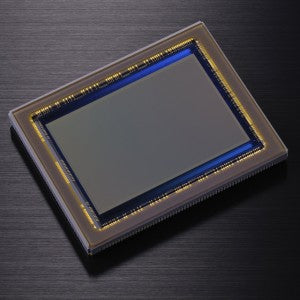A dirty sensor can cause havoc in post-processing. Largest spots are evident in a digital file, and can be removed fairly easily in digital software, but when five, ten, or even fifty spots start to show up in post, the task of removing them can be extraordinarily time consuming. It's best to take precautions to avoid dust and debris on the sensor, and when it's dirty, to clean it properly. Photographers are often nervous about cleaning their sensors for the first time for fear of scratching them, but if done properly, it can be an easy and safe process. Remember that prevention of a dirty sensor is the best policy: minimizing the times you clean your sensor will minimize the possibility of scratching the sensor.
1) Get Setup. You should have enough battery power to last you for at least several minutes. The camera will prompt you to have a full battery, but just be sure you have a substantial amount of power. You don't want the mirror to snap down on your sensor wipe while you are cleaning it. Lay out your tools: a new and clean sensor wipe, sensor cleaning fluid, and a RocketBlaster. Part of the preparation should be taking a picture against a white piece of paper or another background that is relatively light. The key is to make this picture out of focus so that you can tell where the spots are and how many exist. Switch your lens to "manual," and twist it to achieve the maximum blurred focus. Note the dirty sensors that have been brought into the store by photographers. By doing this before cleaning, you can have a good sense of how well you have done.
2) Turn on the camera, remove the lens. Make sure you are in a dust-free environment, usually indoors. Cleaning your sensor in a desert environment, near the ocean, or in a slot canyon is not the best idea, as these areas have a high content of sand, salt, and dust in the air. Take a lint-free swab and place two to three drops of E2 solution (or similar professional cleaning solution) on it or use a swab that is presoaked. I usually hold this while I perform the next steps so that it doesn't touch anything and accidentally pick up any dust or lint.
3) Find "Clean Sensor" Mode. By selecting this option in the Menu of the camera, the mirror will lock up, exposing the sensor and will only drop down when the power is turned off.
4) Rocket Blaster. With the mirror snapped up and the sensor exposed, squeeze the Rocket Blaster many times to remove the loose dust. Be careful not to touch the end of the Rocket Blaster to the sensor. Some suggest using compressed air, but we avoid it here, as there is a possibility of shooting some of the chemical in the compression bottle of these products directly onto the sensor. While this is not likely, we feel that we can avoid this problem by using simple air from a device like the Rocketblaster.
5) Gently wipe the sensor. With the pre-soaked, lint-free swab gently wipe the sensor from one side to the other, and then turn the swab over and wipe it in the opposite direction. We would recommend not using this swab again, as it may have picked up some particles that should not be wiped across the sensor again. Many photographers have specific philosophies about using these relatively expensive materials. While it's true that they are expensive, remember that the sensor is the most valuable part of the camera, so homemade remedies should be used with caution.
6) Turn off the camera. Once this is done, turn the camera off. The mirror will snap back into place. Place the lens back on the camera and test the cleanliness of the sensor by again photographing a blank sheet of paper or another homogenous scene like a sky. Again, make sure the manual focus is on, and ensure that the lens is out of focus. This will help you see dust spots that remain on the sensor. If the sensor is clean, your job here is finished.
Perhaps you are too nervous to clean the sensor yourself, and if you would like help in doing this, feel free to let a professional do it, such as a Pictureline employee. We have cleaned hundreds of sensors on all major brands of cameras. For more information, call 800.748.8200 or email us.
TECHNICAL INFORMATION
Find the right size of swab below or check out the PhotoSolutions website.
Sensor Swabs #1: Fuji Finepix S1, S2, S3 Pro, S5 Pro; Leica M8; Canon 1D, 1DMarkII, 1DMarkIII, MarkIV
Sensor Swabs #2: APS-sized sensors. Canon 30D, 40D, 50D, 60D, 7D, Rebel XSi, 300D/500D, 350D/550D; Nikon D200, D300, D300S; All Olympus models; All Pentax models
Sensor Swabs #3: All full-framed sensors. Canon 5D Mark II, Mark III, 1DS; Leica M9; Contax N Digital; Nikon D3, D3X, D3S
RELATED ARTICLES
How Do I Clean My Lens?
How Do I Learn Photography?
Timeless Principles in Black and White Photography




